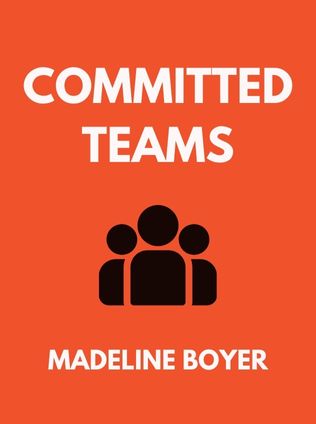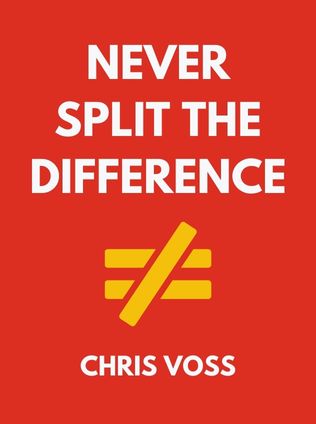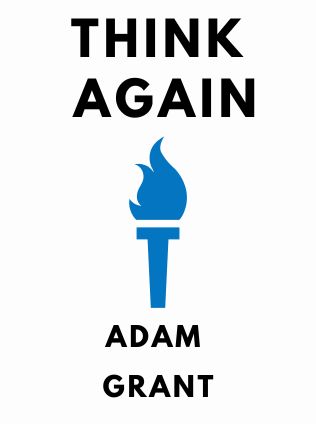
Committed Teams
Three Steps to Inspiring Passion and Performance
By Madeline Boyer,
Published 03/2016
About the Author
Mario Moussa, Ph.D., is the co-director of the Wharton Strategic Persuasion Workshop and advises leaders at top companies on organizational effectiveness, strategy, and change. Madeleine Boyer lectures at the Wharton School and consults for Fortune 500 companies on teamwork, collaboration, and managing organizational culture. Derek Newberry, Ph.D., is a lecturer at the Wharton School and consults for Fortune 500 companies and nonprofits on enhancing collaboration and managing organizational culture.
Main Idea
"Committed Teams: Three Steps to Inspiring Passion and Performance" presents a practical framework for creating high-performing teams by setting clear goals, roles, and norms. The book emphasizes the importance of aligning individual goals with team objectives, maintaining situational awareness, and bridging the gap between stated goals and actual behaviors. The 3x3 framework—Commit, Check, and Close—offers a structured approach to ensure continuous engagement and peak performance in any team setting.
Table of Contents
- Introduction
- Part I: The 3×3 Framework
- Commit: To Know the Rules, You Have to Make Them
- Check: What You Don't Know is Probably Hurting You
- Close: To Bridge the Saying-Doing Gap, Act Like a STAR
- Part II: Five Common Team Types
- Making Virtual Teams Work
- No Time for Teamwork? Lessons from Startups
- Who Has a Good Idea? Insights on Innovation
- Lead or Follow? Guidelines for Leadership Groups
- Why Are We Here? Engaging Committees
- The Authors
Introduction
Teamwork is crucial in today's complex world, shaped by rapidly accelerating technological, economic, and cultural trends. Yet, teams often fall short, delivering more talk than action. The book introduces the 3×3 framework, designed to create high-performing teams through clear goals, roles, and norms, coupled with a process to resolve differences and deepen commitment. The framework's simplicity lies in its three foundations and three-step interactive process: Commit, Check, and Close.
Part I: The 3×3 Framework
Commit: To Know the Rules, You Have to Make Them
The first step involves establishing goals, roles, and norms. A structured conversation, leading to a team charter, is essential. This charter could be formal or as simple as a set of verbal agreements, but the key is having concrete commitments.
Goals
Goals must align with personal motivations to foster engagement. Collective goals should be clear and rally team members, addressing the "What's in it for me?" question. Effective goal-setting requires anticipating potential barriers and creating rules to manage them.
"To be successful, every team needs strong, collective goals that members can rally around." - Mario Moussa
When setting goals, it's essential to have a conversation or negotiation about individual goals. This alignment not only supports team performance but also benefits individuals. Even if perfect alignment isn't possible, the act of trying fosters engagement, honesty, and trust among team members.
aligning goals:
- Creating a shared vision that incorporates individual aspirations.
- Developing a timeline with specific milestones that reflect both personal and team objectives.
- Implementing a feedback loop where team members can regularly discuss and adjust goals.
Roles
Clear, interdependent roles that tap into members' skills and expertise are crucial. Teams need to decide on their structure, whether hierarchical or flat, and how roles fit together. Meaningful roles increase team cohesion and performance.
"Teams work harder and better when members have clear, interdependent roles that tap into their skills, expertise, and sense of meaning." - Madeline Boyer
Consider the following when defining roles:
- Identify the skill sets and expertise needed to achieve desired outcomes.
- Discuss how team members derive meaning from their work and shape roles accordingly.
- Decide on the team's structure—whether more hierarchical or flat—and how authority is distributed.
Norms
Norms govern how the team interacts to achieve goals and fulfill roles. They address conflict resolution, communication, and decision-making. Effective norms are based on potential barriers identified during the goal-setting process.
"Creating norms that head off potential barriers are likely to be your most important priorities." - Derek Newberry
When establishing norms, focus on the top three to five behaviors crucial for the team's dynamic. This includes:
- How conflicts are resolved.
- How information is communicated.
- How decisions are made.
Check: What You Don't Know is Probably Hurting You
Reflection is essential in the second step, ensuring alignment with internal commitments and the external environment. The saying-doing gap, caused by misalignment, is a common reason for poor teamwork. Adopting an observer's mindset, systematically gathering data, and creating a psychologically safe space for feedback are critical to bridging this gap.
Adopt an Observer's Mindset
Viewing team behavior objectively, as an outsider would, helps identify misalignments. Overcoming biases like "overvaluing outcomes" and "motivated blindness" is essential. This involves imagining worst-case scenarios and actively seeking evidence that disproves personal beliefs.
"To find and close the deep disconnects embedded in this mundane interaction, you need to perform three tasks: Adopt an observer's mindset, collect data, and create a psychologically safe space for problem-solving." - Mario Moussa
Collect Data Systematically
Data gathering anticipates potential conflicts on interpersonal, team, and environmental levels. This proactive approach helps maintain alignment and engagement.
Consider these steps for systematic data collection:
Sign up for FREE and get access to 1,400+ books summaries.
You May Also Like
How To Win Friends and Influence People
The All-Time Classic Manual Of People Skills
By Dale CarnegieQuiet: The Power of Introverts
The Power of Introverts in a World That Can't Stop Talking
By Susan CainThe Lean Startup
How Today's Entrepreneurs Use Continuous Innovation to Create Radically Successful Businesses
By Eric RiesWho Moved My Cheese?
An Amazing Way to Deal with Change in Your Work and in Your Life
By Spencer Johnson, M.D.Make Your Bed
Little Things That Can Change Your Life...And Maybe the World
By William H. McRaven



















